John Singer Sargent and His Muse
John Singer Sargent and His Muse
Painting Love and Loss
Karen Corsano and Daniel Williman
Foreword by Richard Ormond
Rowman & Littlefield
Lanham Boulder New York London
Published by Rowman & Littlefield
A wholly owned subsidiary of The Rowman & Littlefield Publishing Group, Inc.
4501 Forbes Boulevard, Suite 200, Lanham, Maryland 20706
www.rowman.com
16 Carlisle Street, London W1D 3 BT, United Kingdom
Copyright 2014 by Karen Corsano and Daniel Williman
All rights reserved . No part of this book may be reproduced in any form or by any electronic or mechanical means, including information storage and retrieval systems, without written permission from the publisher, except by a reviewer who may quote passages in a review.
British Library Cataloguing in Publication Information Available
Library of Congress Cataloging-in-Publication Data
Corsano, Karen, author.
John Singer Sargent and his muse : painting love and loss / Karen Corsano and Daniel Williman ; foreword by Richard Ormond.
pages cm
Includes bibliographical references and index.
ISBN 978-1-4422-3050-7 (cloth : alk. paper) ISBN 978-1-4422-3051-4 (electronic)
1. Sargent, John Singer, 18561925. 2. PaintersUnited StatesBiography. 3. Andr-Michel, Rose-Marie, 18931918. 4. Artists modelsUnited StatesBiography. I. Williman, Daniel, author. II. Ormond, Richard, writer of supplementary textual content. III. Title.
ND237.S3C67 2014
759.13dc23
[B]
2014006348
 The paper used in this publication meets the minimum requirements of American National Standard for Information SciencesPermanence of Paper for Printed Library Materials, ANSI/NISO Z39.48-1992.
The paper used in this publication meets the minimum requirements of American National Standard for Information SciencesPermanence of Paper for Printed Library Materials, ANSI/NISO Z39.48-1992.
Printed in the United States of America

Foreword
The story of Rose-Marie Ormond and Robert Andr-Michel, both victims of the Great War, is a moving and tragic one. The young couplehe the brilliant medieval scholar, she the beautiful model for her uncle, the painter John Singer Sargentwere deeply in love and touchingly idealistic. They had everything to live for, but just a year after their marriage Robert was summoned to war. He fell defending French positions in the hills above Soissons in October 1914. After his death, the heartbroken Rose-Marie took up war work, serving as a nurse to blinded soldiers at the Hospital in Reuilly, before she, too, became a casualty of the war.
Both Robert and Rose-Marie came from privileged backgrounds and distinguished families. Roberts father Andr Michel was a prominent art historian and art critic, whose writings were widely admired. His son was brought up in an intellectual atmosphere, graduating with honors from the prestigious Ecole des Chartes, a college devoted to the study of early manuscripts and charters. Roberts brilliant research on the medieval Palace of the Popes in Avignon enabled him to read the building and its works of art through the documents. His collected papers on the Palace remain a standard source.
Rose-Marie was the daughter of Swiss and American parents. Her father Francis Ormond was the son of a Swiss tobacco tycoon, Michel Louis Ormond, and of his French house-building, art-collecting mother, Marie Marguerite, born Renet. Rose-Maries mother Violet, born Sargent, was the daughter of expatriate American parents, who, in the words of one Sargent biographer, forgot to go home; her brother was the celebrated painter. Peripatetic in their early married life, Francis and Violet had parked their two eldest girls, of whom Rose-Marie was one, with their French grandmother, Bonne-Maman Ormond, who refused to give them up when her son and daughter-in-law finally settled in London and Tunis. Holidays were the time when the two sides of the Ormond family were temporarily reunited, and it was in the Alps that Rose-Marie would be immortalized in the ravishing figure studies by her uncle.
Dan Williman and Karen Corsano have told the story of Robert and Rose-Marie Michel for the first time, against the richly textured artistic and intellectual milieu in which they grew up and flourished. Inevitably the older generation looms large in the story, in the persons of Andr Michel and John Singer Sargent, but never at the expense of the principals. The research has been exemplary, the authors delving into French, English, and American archives (public and private) in search of their quarry. Particularly revealing for me is the new material on the Andr Michel family and their network of relations; the story of Roberts career as a scholar; and the detailing of his military service from his reconstituted notebooks. Rose-Maries wartime work as a nurse is documented and brought to life, including a rare illustration of her among a group of nurses, leading a line of blinded soldiers. Fascinating discoveries like that abound in a narrative that is at once poignant at the human level and revealing on the wider issues of scholarship, art, and war.
I grew up surrounded by Sargents work in the houses of my parents, my uncles and aunt, and my grandmother. Among the pictures were several in which Rose-Marie figured, and I became intrigued by the story of the aunt, forever young, whom I would never meet. She was so radiant and full of life in Sargents pictures and in the family photograph albums that her death seemed then to me a sacrilege. Why her of all people? The more recent chance discovery by a cousin of mine of a cache of letters Rose-Marie had written to her brother Guillaume gave a voice and a personality to what had been a beautiful face and figure. Her letters, so warm and loving, so selfless and idealistic, were a revelation. She cared deeply for her family and regretted her separation from her parents and her siblings for so much of the year. Living with a dominating grandmother cannot have been easy. Her agony and heartache in the face of Roberts death, her determination to stay true to his ideals, her years of service to the blind, heroic as they are, make for painful reading. Yet Rose-Marie was the last person to look for sympathy. She shared a passion for music with her brother, and through her private griefs she often wrote to counsel and encourage him; he would go on to become a distinguished cathedral organist in Truro, England.
As the coauthor of the Sargent catalogue raisonn, I have come to know Rose-Marie as the model and inspiration for a great painter in a rather personal way. I have recorded her in many moods and poses and I have tracked her to the places where she was painted. But I have never felt closer to her than when I stood beside the magnificent tomb where she and Robert lie buried, close to the place where he was killed, out in the open fields above the village of Crouy in northern France. Beautifully cared for by the local community, the tomb is a place visited by them on Armistice Day. It is a kind of epiphany to know that she and her husband are remembered there, in a place at once so idyllic and yet so haunted by the dead of the Great War.
Richard Ormond
Highgate, London

Preface
This history began to take shape in 1995 when the authors visited the Boston Public Library for the first time together. Dan was in town from New York state and Karen was showing him some favorite sights of her native city. At the top of the final dark flight of the Library stairs we arrived in the narrow rectangular hall decorated with John Singer Sargents mural cycle, The Triumph of Religion . The two dramatic ends of the hall immediately claimed our attention. The north wall shows exotic, anthropomorphic figures from ancient Egypt and Assyria and Old Testament prophets. The south wall is an array of medieval Christian representations of the Crucifixion, the Trinity, the Virgin, and angels. Both walls are encrusted with jewels and ornaments, and the crucifix, Moses with the Ten Commandments, and many other details are actually built out from the wall. The dominant colors are strong reds and blues, highlighted with gold leaf. The Frieze of the Prophets is an array of Sargentesque portraits. Even in the poor light and grimy condition of the murals before their restoration in 2003, those walls impressed us as triumphant indeed, solemn and glorious. Catholics from birth and trained academic medievalists, we recognized the symbols and marveled at Sargents facility with archaeological and historical detail and tropes, but we puzzled over his novel iconographic arrangements and juxtapositions.
Next page
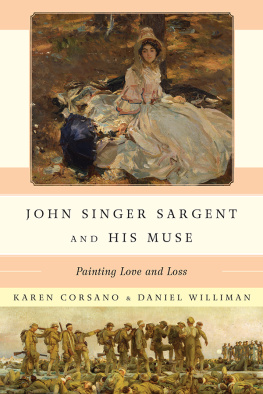


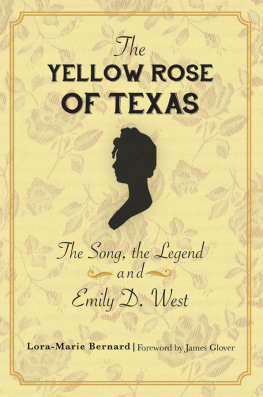

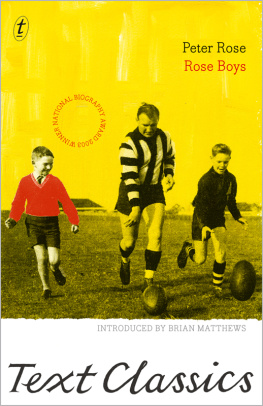
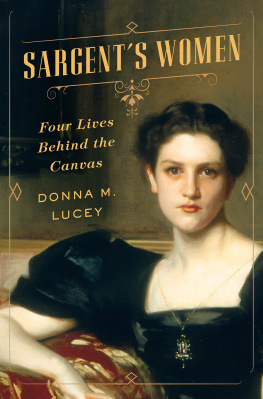
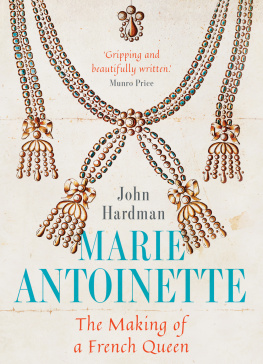
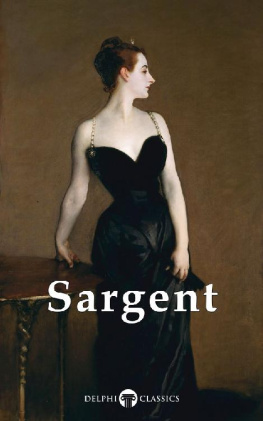
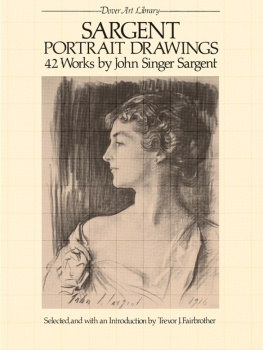
 The paper used in this publication meets the minimum requirements of American National Standard for Information SciencesPermanence of Paper for Printed Library Materials, ANSI/NISO Z39.48-1992.
The paper used in this publication meets the minimum requirements of American National Standard for Information SciencesPermanence of Paper for Printed Library Materials, ANSI/NISO Z39.48-1992.